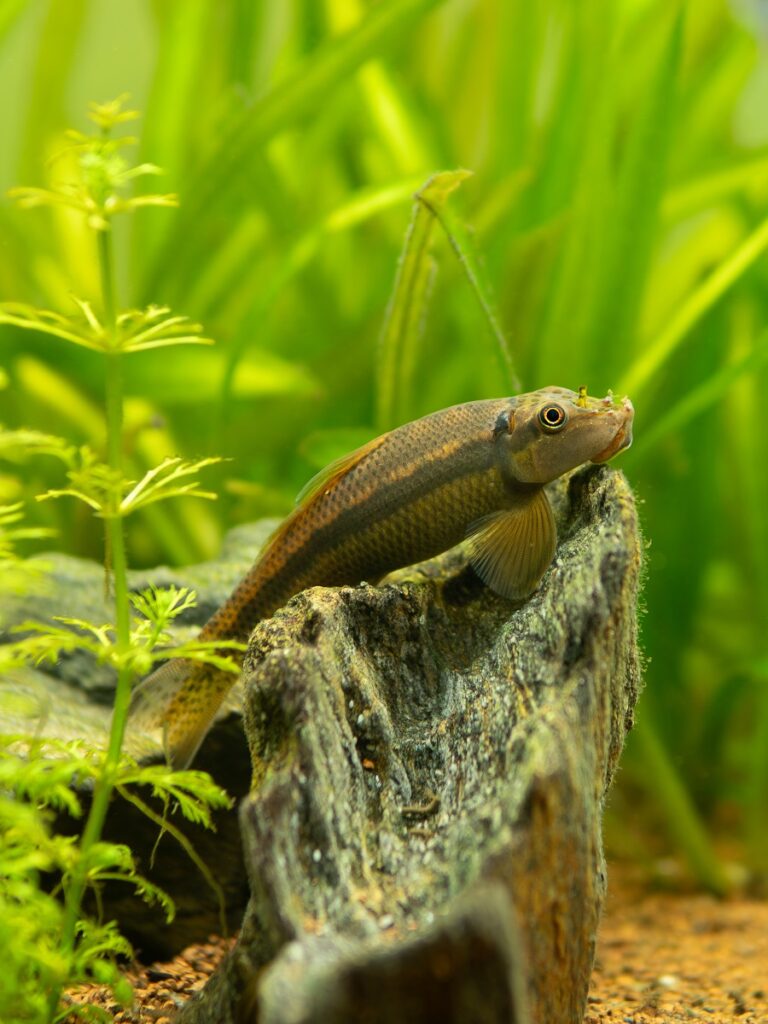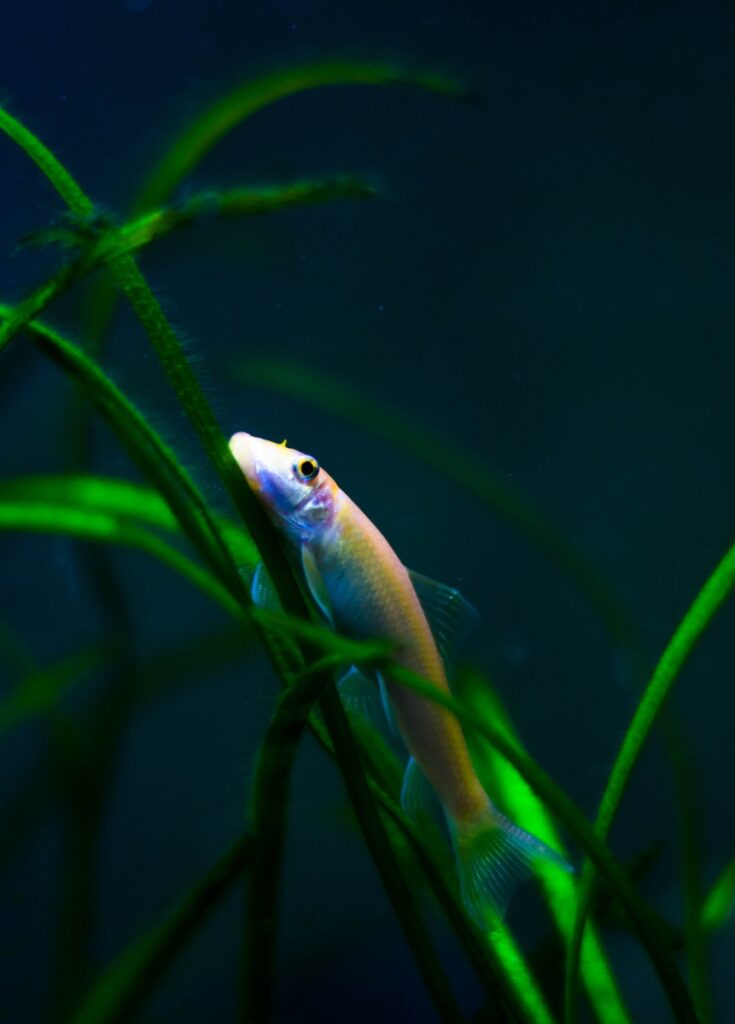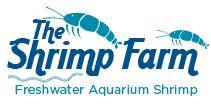Chinese Algae Eater | Care & Info
If you've been an aquarist for a while, you've probably heard of the Chinese algae eater. This bottom dweller, known for its unusual sucker mouth, is commonly seen in aquarium stores and sold for its algae-eating abilities.
Do these fish really eat algae? Will they make a good addition to your community aquarium? Below, find out absolutely everything there is to know about the Chinese algae eater and how to care for it!
| Scientific name | Gyrinocheilus aymonieri |
| Common names | Chinese algae eater, CAE, sucking loach, honey sucker |
| Difficulty level | Intermediate |
| Origin | Southeast Asia |
Table of Contents
Chinese algae eater appearance & natural habitat
Appearance
Now here's a rather unusual-looking fish! The Chinese algae eater, a typical bottom dweller with an elongated and slender body, is easy to recognize by its downturned mouth. Resembling a suction cup, it allows the fish to attach itself even to smooth surfaces thanks to a vacuum mechanism.
This species grows to a maximum size of around 11". Wild-colored fish are brown to greenish-brown in color, often (though not always) with a horizontal line and a pattern of dots and dashes across the body.
There are also a few selectively bred colors available, including marbled and a popular "golden" leucistic variety.
Tip: Today's subject is quite similar in looks to the Siamese algae eater. Look at the mouth to tell the difference: Chinese algae eaters have a suction disc, while Siamese algae eaters sport short barbels.
Natural habitat
Despite its name, the Chinese algae eater isn't actually naturally found in China. It's native to Southeast Asia, occurring in countries like Thailand, Cambodia, and Vietnam (Mekong, Chao Praya, and Mae Klong basins, among other waters).
In its natural habitat, this loach prefers clear, flowing rivers with plenty of debris in the form of driftwood and tree roots. It uses its sucker-like mouth to attach to solid surfaces like rocks. The species is thought to migrate seasonally to deeper waters and seasonally inundated areas.
The IUCN Red List considers the Chinese algae eater to be a species of Least Concern, meaning it's not threatened in its natural habitat.
Did you know? In its natural range, the Chinese algae eater is considered a food source. It's commonly used in Cambodian prahok, a salted and fermented fish paste.
Setting up a Chinese algae eater aquarium
Requirements
The most important thing to keep in mind if you'd like to keep a Chinese algae eater in your aquarium is that although they are usually sold as juveniles, these are not the smallest fish. Due to their adult size of up to 11", a water volume of at least 55 gallons is a good idea.
The ideal set-up for your Chinese algae eater would be a river biotope tank that imitates its natural habitat. This could consist of a substrate combining sand, gravel, and larger river rocks, with plenty of driftwood as décor. The flow should be relatively strong, and you can also add some sturdy plants like Cryptocoryne.
In a river set-up like this, the Chinese algae eater will appreciate strong lighting. This encourages the formation of its favorite foods on the smooth river rocks: algae and biofilm.
Water parameters
As is usual with fish that inhabit faster-flowing waters, the Chinese algae eater doesn't respond well to low water quality. The water should be well-oxygenated and clean; never introduce these fish (or any for that matter) in an aquarium that is not fully cycled. They do best in mature tanks.
Although the species isn't that fussy about specific water values, it's important to keep up with weekly water changes and other aquarium maintenance.
pH: 6-8
Temperature: 72-79 °F
TDS: 40-350
Tankmates
Although it's commonly sold in aquarium stores and you can keep it in certain kinds of community set-ups, it's important to keep in mind that the Chinese algae eater doesn't have a reputation for being a good neighbor. As we've mentioned, these fish are usually sold in their juvenile stages, when they're still small and manageable.
Once a CAE grows, it can start bothering its tankmates. In search of food, it may attach its suction cup mouth to other fish and scrape off their protective slime coat! This can be problematic and even lethal. The species is also known for becoming increasingly territorial as it ages, especially towards fish that look similar to it, such as loaches.
In order to reduce aggression levels, it's usually recommended that the Chinese algae eater be the last fish you add to the aquarium. Keeping it in small groups (6 or more) is also said to help disperse aggression, but you'd need a pretty large aquarium to be able to house that many! In smaller groups, they can end up bullying each other to death, so you may want to consider keeping yours solo.
All in all, the best tankmates for this fish would be species that are quick and nimble, like neon tetras. These inhabit a different water layer and should be able to avoid falling victim to the CAE's slime-sucking antics.
We shrimp lovers are out of luck: an adult Chinese algae eater will eat shrimp, so they don't make good tankmates. Snails aren't considered a great option either.
Chinese algae eater diet
According to researchers studying the Chinese algae eater's sucker mouth, this species is a specialized scraper. The mouth contains two horny rasps with tiny hooks, which are perfect for scraping algae and biofilm (also known as aufwuchs) off rocks and other surfaces.
Wild Chinese algae eaters feed on a variety of algae, microorganisms, and small bugs. In the aquarium, you can feed yours a regular diet of omnivore pellets and flakes. This diet can be supplemented with frozen foods, live foods, gel foods, and blanched veggies such as zucchini.
So what about the aquarium cleaning capabilities of this "algae eater"? Well, aquarists have found that while young specimens do seem to have a healthy appetite for algae, adults switch to a more protein-based diet. This means they're not the best aquatic janitors in the long run; maybe consider an algae eating shrimp species instead?
Breeding Chinese algae eaters
Sorry, no luck here!
Although Chinese algae eaters are bred on a large scale for the aquarium hobby, they aren't known to breed in the home aquarium. Commercial breeding is achieved using hormone injections to induce spawning.
Buying Chinese algae eaters
The Chinese algae eater is a very common sight in aquarium stores. You should have no problem finding the golden color variety; wild-colored fish are a little less commonly seen.
And did you know that you can also buy aquarium fish like this one online? The Shrimp Farm sells golden Chinese algae eaters and ships them right to your doorstep with live arrival guarantee. Now that's convenient!
Sources & further reading
Benjamin, M. (1986). The oral sucker of Gyrinocheilus aymonieri (Teleostei: Cypriniformes). Journal of Zoology, 1(2), 211-254.
Rainboth, W. J. (1996). Fishes of the cambodian mekong. Food & Agriculture Org..



 Shrimp
Shrimp Fish
Fish Crab &
Crab & Plants
Plants Foods
Foods Snails
Snails

